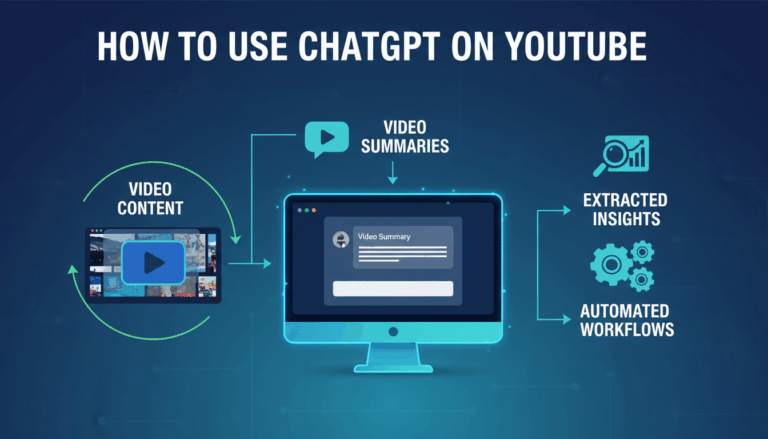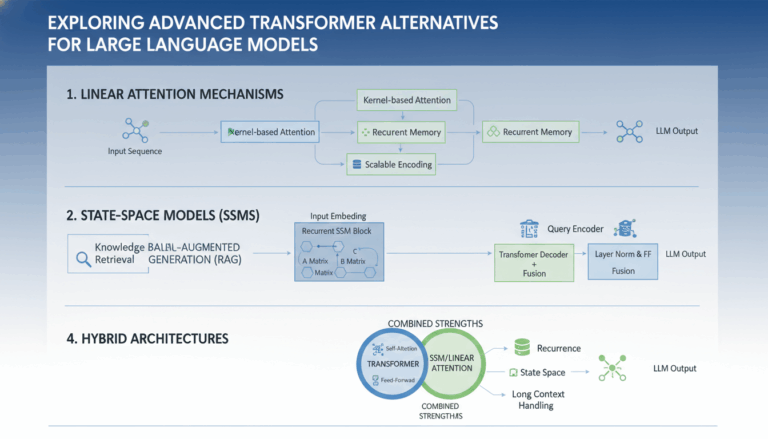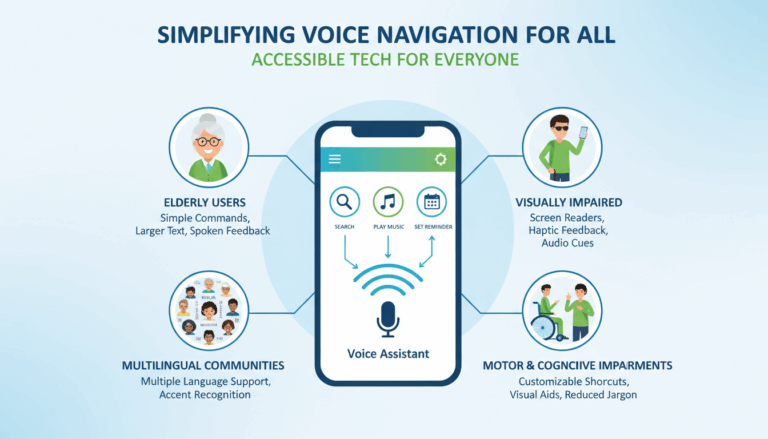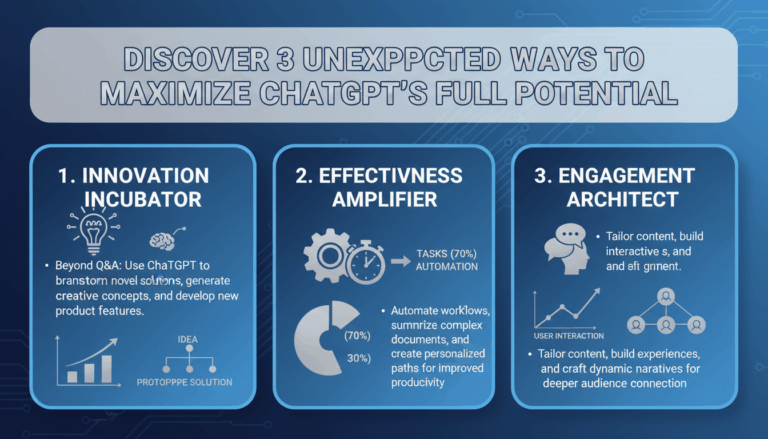The Rapid Evolution of AI in Education
Artificial Intelligence has undergone a dramatic transformation in recent years, reshaping numerous sectors, but perhaps nowhere is this more evident than in the realm of education. Innovations in machine learning, natural language processing, and adaptive learning systems have revolutionized how students access information and receive personalized instruction. Leading universities and organizations have invested in extensive research to harness AI’s potential for educational purposes, and the results are nothing short of transformative.
AI-powered tutoring platforms utilize algorithms that can analyze a student’s strengths, weaknesses, and learning styles in real time. Unlike traditional classroom settings, where individual attention is often limited due to high student-to-teacher ratios, AI tutors offer tailored instruction based on continuous assessment and feedback. According to a report by Stanford University, AI-driven educational tools can adapt content to meet each learner’s needs, making learning more efficient and effective.
For example, platforms such as Khan Academy’s Khanmigo and Pearson’s AI-driven learning assistants offer interactive problem-solving, instant feedback, and even emotional encouragement—features that were previously only available through human tutors. These systems enable students to learn at their own pace, revisit challenging concepts, and explore new material, fostering a self-directed and personalized learning environment.
The rapid integration of AI also means that educational resources are becoming increasingly accessible. Previously, quality tutoring was often available only to those who could afford private sessions. Now, through the proliferation of affordable or even free AI-powered tools, students worldwide can benefit from high-quality instruction regardless of their socio-economic background. A recent article in Education Week details how these advancements are bridging gaps in underserved communities, providing opportunities that were once out of reach.
Ultimately, the swift evolution of AI in education is not merely a technological trend, but a fundamental shift in how knowledge is imparted and acquired. As algorithms become more sophisticated and widely accessible, AI’s role in reshaping the educational landscape continues to expand—pointing to a future where personalized, effective, and inclusive learning is the new global standard.
How AI Tutors Are Different from Human Tutors
Unlike traditional human tutors, AI-powered tutors operate on data, algorithms, and machine learning, making their approach fundamentally different—and often more efficient—in helping students learn. Here’s a closer look at how AI tutors diverge from their human counterparts:
- Personalization at Scale
Human tutors excel in one-on-one interactions, but their capacity to personalize is limited by time and resources. AI tutors analyze data from thousands of students simultaneously, customizing lessons for individual strengths, weaknesses, and learning styles. For example, platforms like Khan Academy and Coursera use machine learning to continually adapt content for learners, making real-time adjustments no human tutor could achieve across so many students at once. - Availability and Accessibility
While human tutors are bound by schedules and geographic limitations, AI tutors are accessible 24/7 from anywhere in the world. This perpetual availability democratizes education, breaking down barriers for students who live in remote areas or have unpredictable schedules. For instance, tools like Duolingo employ AI to facilitate language learning with constant feedback, making effective tutoring as simple as unlocking a smartphone. - Instant Feedback and Assessment
One of the greatest advantages of AI tutors is their ability to provide instant feedback. Human tutors may take time to grade assignments or assess comprehension. In contrast, AI analyzes responses in real time, providing constructive suggestions, explanations, and even additional resources tailored to the learner’s gaps. Academic research has shown that immediate feedback, such as that provided by AI systems, substantially boosts learning outcomes (Scientific American). - Unbiased, Data-Driven Guidance
While human tutors can be influenced by unconscious bias or personal teaching styles, AI tutors remain impartial, relying purely on data and proven methodologies. This data-first approach ensures consistency and can lead to fairer educational opportunities for all students. These algorithms are continually improved through rigorous testing and peer-reviewed research (Stanford Graduate School of Education). - Scalable Support for Diverse Subjects
Human tutors often specialize in a handful of topics, whereas AI tutors can be programmed to support a vast array of subjects—from mathematics and science to humanities and coding—updating their knowledge base continually with the latest findings from trusted resources like edX. AI’s scalability means it can seamlessly transition between topics, offering students holistic support that human tutors generally cannot match. - Emotional Intelligence and Motivation
Critics often point out that AI tutors lack the empathy and personal touch of human tutors. However, ongoing advances in AI emotional intelligence are rapidly narrowing the gap. For example, AI chatbots now use sentiment analysis to detect frustration or confusion, offering encouragement or coping strategies modeled on educational psychology (Stanford: The Ethics and Human Touch in AI).
The differences between AI and human tutors aren’t just academic—they fundamentally reshape how, when, and for whom education is delivered. As AI continues to evolve, these distinctions will only become sharper, paving the way for more inclusive, effective, and engaging learning experiences for everyone.
Key Technologies Powering the AI Tutoring Revolution
At the heart of the AI tutoring revolution lie several breakthrough technologies that are radically transforming how educational support is delivered. These AI tools are making personalized instruction faster, smarter, and more accessible than ever before. Let’s explore the key innovations driving this change.
1. Natural Language Processing (NLP)
Natural Language Processing empowers AI systems to understand, interpret, and generate human language. AI tutors, such as ChatGPT, rely on advanced NLP algorithms to interact with students conversationally, answer questions, and explain concepts. By analyzing text or spoken input, these systems can break complex problems into simpler steps, mimic human tutors’ questioning techniques, and adjust explanations based on student comprehension levels. For example, a student struggling with algebra can ask the AI for clarification, receiving personalized responses tailored to their unique understanding.
2. Machine Learning and Adaptive Learning
Machine learning models drive personalization in AI tutoring. These models analyze students’ performance, learning pace, and areas of difficulty, then continuously refine their instruction strategies. Platforms such as Khan Academy’s Khanmigo use adaptive learning technologies to map learners’ strengths and weaknesses, delivering targeted exercises that dynamically adjust as students progress. This means a student who excels in one topic but struggles in another receives custom support where it’s most needed, mirroring the attention of a human tutor—at scale.
3. Automated Assessment and Feedback
AI tutors excel at real-time analysis of student inputs, from quiz answers to essay responses. Tools powered by educational assessment algorithms instantly grade assignments and provide detailed feedback. This immediate response helps students understand mistakes as they happen, reinforcing learning and enabling faster improvement. Moreover, by reviewing large volumes of anonymized data, AI systems can identify common misconceptions across populations, further informing instructional improvements.
4. Speech Recognition and Voice Interaction
Modern AI tutors are not limited to text-based communication. Incorporating speech recognition technologies, like those developed by DeepMind, these systems enable students to engage in natural voice conversations. Voice-driven tutoring not only improves accessibility—allowing younger learners or those with disabilities to participate—but also more closely mimics human interactions, making the tutoring experience seamless and intuitive. For instance, learners practicing language skills can benefit from real-time pronunciation feedback and dialogue simulation.
5. Data Analytics and Learning Insights
Behind the scenes, advanced analytics tools connect the dots between student behaviors, engagement levels, and learning outcomes. Platforms such as edX Insights track user data to generate actionable reports for both students and educators. These insights help optimize teaching strategies, identify at-risk learners, and tailor interventions, all while maintaining data privacy and security. As a result, AI tutors are able to deliver highly targeted help at precisely the right moments in a student’s learning journey.
Together, these technologies underpin the surge in AI-powered tutoring solutions. Beyond replicating the support provided by human tutors, AI systems enrich the experience with instant feedback, adaptive instruction, and deep personalization—paving the way for a fundamentally new era in education.
Cost-Effectiveness: AI Tutoring vs. Traditional Tutoring
When comparing the cost-effectiveness of AI tutoring and traditional tutoring, the differences are striking. In recent years, an increasing number of educational institutions and parents have started to recognize the financial and educational benefits of AI-driven platforms. Let’s explore why AI tutoring is positioned to become the go-to solution for millions and how it manages to offer more for less.
Affordability at Scale
Traditional tutors typically set their rates anywhere between $30 to $80 per hour, or even higher for specialized subjects or test preparation. This cost accumulates quickly, especially for students who require ongoing or intensive support. In contrast, AI tutors are accessible via monthly subscriptions or even free basic versions. Services like Khan Academy’s Khanmigo or Duolingo’s AI chatbots can provide around-the-clock assistance, reducing the financial barrier to high-quality educational support.
Personalization without Premium Pricing
One of the primary advantages touted by supporters of traditional tutoring is personalized instruction. However, modern AI tutors leverage advanced algorithms to adapt in real-time to a learner’s strengths and weaknesses. Platforms like Socratic and Study.com use deep data analysis to construct individual learning plans—something a human tutor might charge a premium for. Yet, these AI-based programs offer personalization for a fraction of the cost, making tailored learning accessible to students from all socioeconomic backgrounds.
24/7 Availability Leads to Increased Value
Traditional tutors are bound by schedules, commute times, and limited availability. Students often have to fit sessions around the tutor’s calendar, leading to delays in addressing urgent questions. AI tutors, however, are accessible 24/7 from any device with an internet connection. Imagine a student struggling with math homework late at night—an AI tutor can step in immediately, providing instant explanations and practice problems. This around-the-clock access is crucial for flexible, modern education.
Consistent Quality for All Learners
The quality of traditional tutoring can depend heavily on the tutor’s experience, teaching style, and rapport with the student. In contrast, AI tutors deliver consistent instruction, following evidence-based best practices and staying updated with the latest educational standards. For instance, Education Week notes that AI systems are constantly refined based on feedback from millions of users, ensuring improvements over time and reducing the variability found in human instructors.
Case Study: Comparative Savings and Outcomes
A 2023 study by the Hechinger Report found that students using AI tutors saw academic improvements on par with, and sometimes surpassing, those working with live tutors, all while costing up to 80% less. Schools piloting AI tutoring programs reported substantial budget savings which could then be reallocated to other student services and resources.
AI tutoring’s cost-effectiveness not only lowers the financial barriers to individualized learning but also promises quality, consistency, and accessibility that traditional tutoring cannot always guarantee. As AI continues to become more sophisticated, these advantages are only expected to increase—further widening the gap between manual and digital instructional support.
24/7 Availability: The Convenience Factor of AI Tutors
One of the most compelling advantages of AI-based tutoring is the promise of round-the-clock accessibility—a convenience that traditional human tutors simply cannot match. Imagine a student grappling with a complex calculus problem at midnight or an early-morning elementary learner needing help with phonics before school. AI tutors are available precisely when they’re needed, eliminating the constraints of human schedules. This is a game changer for students and parents navigating busy routines, different time zones, or unpredictable workloads.
This level of accessibility enables continuous, self-paced learning. Students aren’t forced to wait for the next available session; they can instantly access targeted help and resources the moment confusion strikes. Children in remote areas or those with limited access to specialized tutors especially benefit from this 24/7 support, narrowing educational inequality gaps. For a closer look at how this technology supports global education efforts, visit this Stanford University study exploring AI’s role in education.
AI-powered tutoring platforms are designed to adapt to each learner’s unique pace and style. With AI, students can:
- Review concepts repeatedly without feeling judged or embarrassed—a challenge many students report with face-to-face tutoring.
- Ask clarifying questions in real-time, aided by natural language processing that interprets and responds to their queries instantly.
- Access interactive simulations and personalized quizzes tailored to their immediate needs.
These features foster independent learning and build confidence, as students know that guidance is a click away, any time of day or night. Education Week offers examples of AI tutors being used in real-world classrooms to great effect, underscoring just how transformative this support can be.
Of course, 24/7 availability is about more than convenience; it’s also about maximizing learning opportunities and driving better outcomes. For working parents or students with unconventional schedules, this flexibility can mean the difference between falling behind and staying on track. As the academic and personal demands on students intensify, AI’s ever-present support will become indispensable—reshaping expectations and setting new standards for individualized, timely help.
Personalized Learning Paths: AI’s Adaptive Advantage
One of the most significant advantages of AI-powered learning systems is their ability to tailor educational experiences uniquely for each student, a feat that is virtually impossible for traditional one-size-fits-all classroom models and even most human tutors. AI uses advanced algorithms and real-time data analysis to adjust curricula based on individual performance, learning pace, and interests, ensuring that students receive personalized attention every step of the way.
AI’s adaptability stems from its ability to quickly identify gaps in a student’s understanding, using assessment data and behavioral patterns. For example, platforms like Khan Academy use machine learning to recommend targeted practice exercises and content based on students’ previous responses, fostering engagement and reinforcing weak areas. This level of personalization accelerates progress, making learning both more efficient and enjoyable.
Consider a student struggling with algebraic concepts. An AI tutor can diagnose specific subtopics where errors occur, such as factoring or equation solving, and instantly offer customized lessons, practice problems, or even video explanations at the optimal difficulty level. This goes beyond what most human tutors can handle in real-time and scales effortlessly across thousands of learners.
This adaptive learning capability not only boosts academic achievement but also nurtures autonomy and confidence in students. Research from Stanford University‘s Graduate School of Education highlights how AI-driven systems like ASSISTments allow students to learn at their own pace while receiving data-driven feedback, resulting in better knowledge retention and motivation (Stanford News).
Furthermore, these AI tools can integrate multimedia resources, gamified challenges, and real-world applications into lesson plans, which caters to diverse learning styles—visual, auditory, kinesthetic, or reading/writing. For instance, an AI tutor can supplement a history lesson with interactive timelines, quizzes, or primary sources from reputable sites like the Library of Congress, making content more accessible and memorable.
As AI continues to evolve, its power to provide adaptive, data-backed personalized instruction will revolutionize the way we learn, moving us toward an era where no student gets left behind due to generic teaching approaches or time constraints of human tutors.
Overcoming Human Limitations in Tutoring
Human tutors have been invaluable for centuries, but their limitations are now being magnified by the complex demands of 21st-century learners. One of the chief challenges is scalability. A single tutor can only work with a handful of students at a time, and the quality of attention can diminish as the student count grows. In contrast, artificial intelligence-driven tutoring systems can serve thousands of students simultaneously, maintaining consistent support 24/7 without fatigue or time restrictions. This scalability advantage is detailed in a report from the Brookings Institution, emphasizing AI’s capacity to transform mass education delivery.
Another limitation of human tutors is the inevitable subjectivity and inconsistency that can arise in feedback and teaching style. Human moods, unconscious biases, or distractions may unintentionally impact the student’s learning experience. On the other hand, AI tutors are powered by algorithms that provide objective, data-driven feedback tailored precisely to each student’s performance. For instance, advanced platforms like Carnegie Learning’s AI tutors use adaptive algorithms to personalize math instruction, an approach backed by research from Carnegie Mellon University.
Additionally, AI surpasses human limitations in content coverage and currency. Human tutors might not always be up-to-date on the latest curricula, discoveries, or educational resources, while AI-driven systems can update instructional material in real-time. Machine learning models constantly learn from new data and best practices across regions and disciplines, meaning students always receive the most current and relevant information. According to Education Week, AI tutors are continually improving, integrating new teaching strategies, and recognizing students’ misconceptions faster than any individual could manage.
Finally, accessibility is a pressing challenge where AI holds a transformative advantage. Many students live in regions where quality tutors are scarce or unaffordable. AI-driven platforms bridge this gap, offering personalized, high-quality education regardless of geography or socioeconomic status. The Stanford Graduate School of Education provides a compelling perspective on how AI can democratize learning for underserved populations globally.
While human empathy and encouragement remain important, the ability of AI tutoring systems to overcome these critical human limitations is why they are poised to become the default mode of instruction in the near future.
Addressing Concerns: Can AI Replace Empathy and Motivation?
When discussing the rise of AI in tutoring, one of the most persistent concerns revolves around whether AI can truly replace the human attributes of empathy and motivation in an educational context. Empathy, the ability to sense and understand the feelings of others, and motivation, the encouragement to keep learners engaged, are both essential for effective education. Let’s examine these critical factors in detail and consider how AI is attempting to bridge the gap.
Understanding Empathy in Tutoring
Human tutors instinctively read social cues, facial expressions, and tone of voice to assess whether a student is confused, frustrated, or disinterested. This emotional awareness enables a teacher to offer immediate reassurance, adjust their teaching style, and create a supportive environment. Research from Edutopia emphasizes that empathetic teaching is linked to higher student achievement and improved well-being.
AI systems today leverage advanced sentiment analysis and emotion detection technologies to approximate empathy. For example, AI-powered platforms can analyze written responses, speech patterns, and even facial expressions through webcams to infer a student’s emotional state. If a learner appears disengaged, the AI might switch to more interactive content or recommend taking a break. However, the subtlety of human empathy—like recognizing when personal encouragement is needed—can be hard for algorithms to fully capture.
- Example: Suppose a student repeatedly gets answers wrong. A well-designed AI could detect frustration in the language or timing of answers and automatically respond with supportive messages or simplified explanations.
Motivating Students: The Human and the Algorithmic
Motivation often relies on personal connection. Human tutors encourage students by sharing their own experiences, offering praise, and helping learners see the value in perseverance. According to Stanford research, motivated learners are more likely to overcome challenges and improve their performance over time.
AI tutors, while not capable of personal storytelling or genuine enthusiasm, use gamification, immediate feedback, and data-driven nudges to maintain engagement. These systems can:
- Provide tailored rewards and recognition.
- Adjust lesson difficulty in real time to keep students in the optimal learning zone.
- Remind students of goals and progress, helping them reflect on their achievements.
Systems like Khan Academy and Coursera already use these strategies, integrating badges, leaderboards, and progress tracking into their learning platforms. While this can significantly increase motivation for many learners, it may not fully replace the nuanced encouragement and rapport of a human mentor—at least not yet.
Bridging the Emotional Gap: Hybrid Solutions and the Future
AI’s potential to replace tutors hinges on ongoing advancements in emotional intelligence and adaptive learning. Some educational models are already combining AI with human oversight—a hybrid approach. Teachers and parents receive insights from AI about when a student is struggling, making it easier to intervene with understanding and support.
Going forward, AI will continue to evolve, perhaps learning to simulate more natural empathetic responses and deeper motivational strategies. However, as highlighted by Brookings Institution, while AI can assist in emotional engagement, the human touch remains a critical ingredient in holistic education—at least for now.
Ultimately, AI tutors are closing the gap with remarkable speed, but for many students, especially those who thrive on personal encouragement and empathy, the best results may come from thoughtful integration of AI with human guidance.
Potential Career Shifts for Human Tutors
As artificial intelligence becomes increasingly sophisticated, the traditional role of human tutors is set to experience a transformative shift. While the prospect of AI replacing 95% of tutors by 2026 might sound daunting, this dramatic change also signals the emergence of new career avenues for educators. Here’s how human tutors can adapt and thrive in the rapidly evolving educational landscape.
1. Transitioning to Educational Technology Specialists
With the proliferation of AI-driven platforms in education, there is a growing need for specialists who can bridge the gap between technology and pedagogy. Human tutors can upskill themselves in:
- Learning Management Systems (LMS): Mastering platforms like Canvas, Blackboard, and Google Classroom enables tutors to support both students and institutions.
- EdTech Consulting: Advising schools on the implementation and optimization of AI tools for personalized learning.
For those interested in making this transition, pursuing certifications in instructional technology and engaging with online training from reputable sources such as Coursera or edX can lay a solid foundation.
2. Roles as AI Curriculum Designers and Content Developers
AI may be taking over direct tutoring roles, but intelligent systems still need content to operate effectively. Human expertise is invaluable in designing adaptive curricula and learning resources. Some possible career moves include:
- AI Training Data Curators: Ensuring that AI tools are trained on accurate, bias-free, and comprehensive educational materials.
- Interactive Content Developers: Creating rich, engaging multimedia lessons, simulations, and assessments to complement AI tutors.
For inspiration, look at how leading organizations like Khan Academy blend human expertise with AI to deliver high-quality content.
3. Focusing on Emotional and Social Skills Coaching
While AI excels at content delivery and personalization, it currently lags behind in addressing the social and emotional learning (SEL) needs of students. Human tutors can pivot toward:
- SEL Coaching: Facilitating group discussions, conflict resolution, and empathy training, which remain uniquely human abilities.
- Mental Health Support: Working alongside school counselors to provide emotional support and promote student well-being.
Specialized training through workshops or advanced degrees can enhance these skills and make tutors indispensable partners to AI-driven systems.
4. Becoming AI Implementation and Ethics Advocates
The increased presence of AI in education raises ethical considerations around data privacy and algorithmic bias. Human tutors with interests in policy or advocacy can:
- Serve on school technology advisory boards: Guiding ethical adoption and ensuring inclusive practices.
- Develop educational policy: Working with regulatory bodies to craft guidelines that protect students and educators alike.
Reputable organizations like the International Society for Technology in Education (ISTE) publish resources and host conferences that can help interested educators stay informed and contribute meaningfully.
5. Embracing Life-Long Learning and Professional Development
Finally, the most successful tutors will be those who commit to continuous learning and self-improvement. Staying current on trends through professional networks such as Edutopia or attending industry conferences are key steps in navigating this transition. Human tutors can also mentor peers as they adapt to new technologies, fostering a culture of collaboration and resilience.
By capitalizing on their unique strengths and embracing new opportunities, human tutors can not only weather the impending AI revolution but also play a critical role in shaping the future of education.



